Fruit Fly Aphrodisiacs | The Great Sperm Race | Nature's Powerful, Sexy Females | Nature's Role Reversals 2011 Research
/Fruit Fly Aphrodisiacs
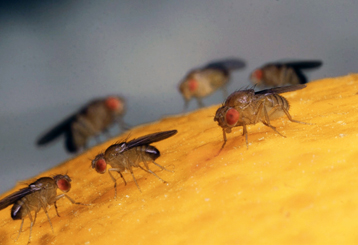 Fruity aromas: an aphrodisiac for flies AOC FP View 10/9/11
Fruity aromas: an aphrodisiac for flies AOC FP View 10/9/11
Described for the first time, the olfactory molecular receptor IR84a maintains the sensorial neurons permanently active, even without odor, so as to keep the male flies ready to attract a potential partner. In this way, the more “perfumed” (with phenylacetic acid) the partner, the more attractive it will be, thereby greatly increasing the insect’s sexual arousal.
Fruit fly research is often highly applicable to humans, given our large amount of shared DNA. More fruit fly; more aphrodisiac
Smart Male Monkeys
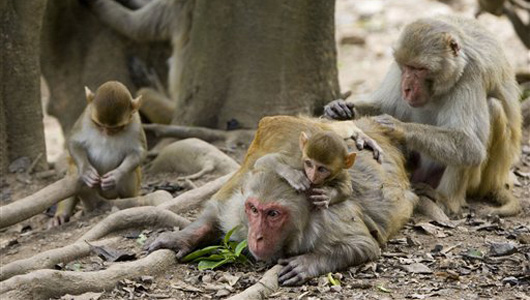 Rhesus macaque monkeys groom one another on Cayo Santiago, known as Monkey Island, off the eastern coast of Puerto Rico. (Photo: Brennan Linsley)Mating Male Monkeys Recognize Known Ovulating Females 4/29/2011
Rhesus macaque monkeys groom one another on Cayo Santiago, known as Monkey Island, off the eastern coast of Puerto Rico. (Photo: Brennan Linsley)Mating Male Monkeys Recognize Known Ovulating Females 4/29/2011
Male rhesus macaque monkeys of Cayo Santiago are able to distinguish images of ovulating females with 80 percent accuracy, if they know her.
Researchers gave the males photographs of female’s face: one taken on a day when she was ovulating and the second, when she was not. Males gazed longer at the images of ovulating females more than 80 percent of the time.
In the control group of images, the male monkeys looked at faces of female monkeys they didn’t know and revealed no preferences for ovulating females. via Science Daily
Male Songbird Performance
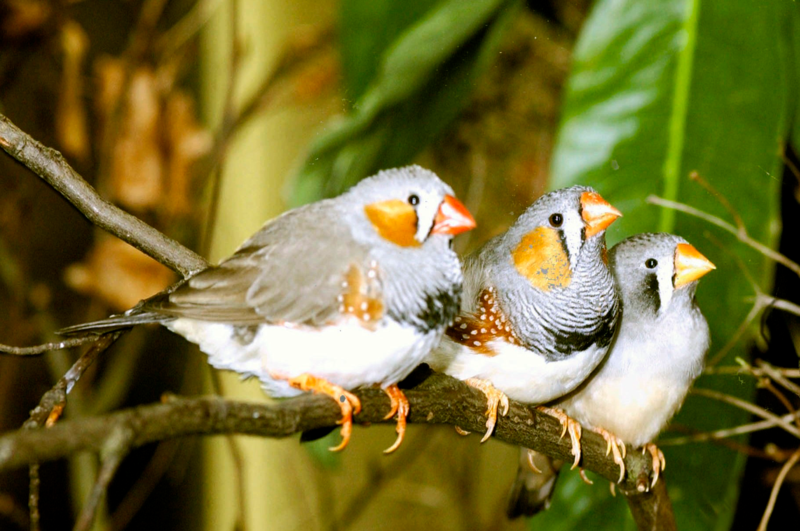
Male Songbirds Sing Better When Female Is Present 2/26/2011
New research focused on studying male zebra finch song, scientists have discovered that young males sing better in the presence of a female than when practicing their singing alone.
Even as adult, zebra finches sing two types of tunes. When just hanging out alone, the males sing undirected melodies. They are capable of singing more directed and precise tunes, generally preferred by females.
As adolescents the boys practice vocalization through a trial and error process. But Allison Doupe, MD, PhD, a professor of psychiatry and physiology and a member of the Keck Center for Integrative Neuroscience at UCSF said of her exercise with female supervision:
“The birds picked the best version of the song that they could possibly perform and they sang it over and over again. They sounded almost like adults. It turns out that teenagers know more than they’re telling us.”
Social cues from the female impacted their male bird brains to sing better. Most of the trial and error fooling around singing of adolescent male zebra finches occurs in the basal ganglia circuits of the brain. The social cues from the female prompted the brain to move beyond the more instinctual basal ganglia part of the brain into critical thinking processing.
Birth Control Turnoff?
Hormonal Birth Control Turns Off Male Lemurs & Maybe Men, Too 2/8/2011
Christine Drea, an associate professor of anthropology at Duke, is focused on understanding all the ways hormonal contraception changes scent cues among animals, and specifically how captive ring-tailed lemurs relate to one another socially and sexually when given monthly injections of Pfizer’s Depo-Privera.
Female lemurs use scent to convey not only fertility status, but also “information about identity, her relatedness to others, and her genetic homozygosity, an indicators of in-breeding.” The lemurs in Drea’s study that were on birth control suffered from scrambled scents, causing Drea to say “There’s something very different about these gals.”
The 13 males in the study showed clear preferences for the scents of intact (not on birth control) females, spending less time investigating the lemurs on contraception.
Drea postulates that because we already know the humans send and receive olfactory cues about hormonal status and possible compatibility, “One has to wonder if human mate choice might be affected in some of the same ways it has been in these primates.” via Science Daily
Baboon Beauties Get Bullied

Baboon beauties are more likely to get bullied EarthSky 8/9/2011
The price of being a beautiful female in nature can be high. In the case of a fruit fly, a girl with beautiful big wings is so often persued so aggressively by multiple males that she has no time to eat and can die of malnutrition and exhaustion.
Today’s topic is baboons; and it’s not only males who are cornering the sexually desireable female in heat. Scientists tracking the number of aggressive exchanges between 27 wild female chacma baboons from two different groups in Tsaobis Leopard Park in central Namibia over 18 months have recorded 1027 interactions among the females.
Previously, researchers assumed that male baboons fought over sex and females over food to protect their young. In fact, Dr Elise Huchard from the German Primate Center and lead author of the study, with her colleague Dr Guy Cowlishaw from the Zoological Society of London, found that pregnant baboons do start food fights.
But pregnant baboons aren’t prone to being bullied, the most common source of conflict behavior among the female baboons. Reality is that females in heat and females already guarded by a male baboon were the most likely to be attacked, although they themselves do not pick fights with other female baboons.
Being a fertile, reproductive, competitive threat or already being chosen by a male baboon raised the greatest probability of being attacked by other females. The researchers agree that more investigations are in order, given this surprising emphasis on female sexuality and aggression among other female baboons.
Oceanic Mating Calls

Male Humpback Whales Transmit Same Mating Tune Across Oceans 4/18/2011
Male humpback whales generally agree that one mating tune is best, leaving all males crooning the same song as they travel in search of females. Researchers now report a fascinating fact that the pattern of the song changes, spreading across the ocean, and almost always traveling west to east.
“Our findings reveal cultural change on a vast scale,” said Ellen Garland, a graduate student at The University of Queensland. Multiple songs moved like “cultural ripples from one population to another, causing all males to change their song to a new version.” This is the first time that such broad-scale and population-wide cultural exchange has been documented in any species other than humans, she added. via Science Daily
Mellow Dad | Female Fertility
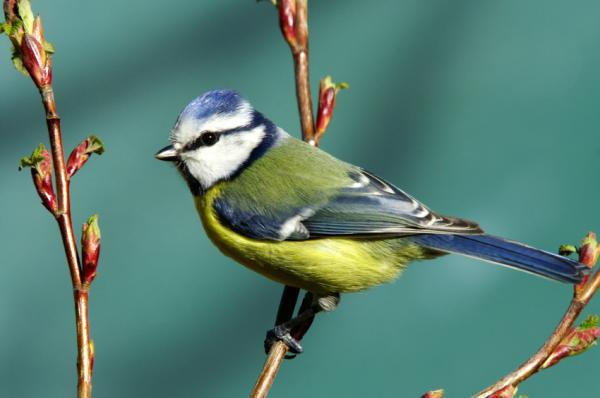
A Parenting-Type Male Tit Bird Enhances Female Fertility 1/20/2011
Male tit birds are major players in the fertility of aging females. A smart chickie tit bird can slow her biological clock by choosing the right mate. Contrary to prevailing wisdom that males don’t matter much in birdland fertility patterns, they do.
The male bird’s ‘paternal past’ is relevant says Anne Charmantier of France’s National Center for Scientific Research, also known by its French initials CNRS.
Males who got a head start on fatherhood — within their first year of life — may be healthier or more experienced mates than dads that delayed. “Males that start breeding early may be in better condition, or have lower parasite load,” Charmantier said.
Parenting-type male tit birds help the female build the nest. He brings her food while she’s incubating the eggs. He even takes care of the hatchlings. No wonder the female tit bird arrives fertile to greet another spring tit bird breeding season. via Science Daily
More
Feeding Male Great Tits Makes Lazy Birds Unwilling to Get Up & Sing For a Mate AOC Green Beings 1/2/2001
Female Peahens Count Spots
 5/9/2011 Female peacocks are tolerant of natural variation in the number of eyespots on the male suitor’s tail — to a point. However, a crew cut resulting in a substantial reduction in eyespots on tails is bad news for attracting attention among the females.
5/9/2011 Female peacocks are tolerant of natural variation in the number of eyespots on the male suitor’s tail — to a point. However, a crew cut resulting in a substantial reduction in eyespots on tails is bad news for attracting attention among the females.
Roz Dakin and Robert Montgomerie of Queen’s University aren’t sure why fewer spots is a big turnoff. The male may be perceived as immature or unhealthy. The female’s mating decision is a complex process.
Besides their showy displays, males display variations in their calls. They even position themselves in the sunlight to make the most of their feathers and beautiful coloration, in an effort to seduce the peahen. via Science Daily
It seems to us that male scientists may flatter themselves about the submissive of females in nature. The facts are that women were conquered. There is a qualitative difference in how ‘natural submission’ is defined in nature vs humans.
Peacock Mating Dance
Queen Bee Brain Power

Social Queen Bees Have Bigger Brain Power for Learning, Memory 2/23/2011
The ‘social brain hypothesis’, known also as the ‘Machiavelli hypothesis’, is based on the idea that to maintain power and control in groups, you need people with big brains. It assumes that leaders will have big brains capable of adeptly processing multiple initiatives simultaneously with effective results.
While researchers have studied brain sizes in animals for years, it’s been difficult to make direct connections between brain size and sociality. A May 2010 study on social bee queens gave interesting insights into the ‘social brain hypothesis’.
Megalopta bees exhibit one of two types of social behavior, writes Science Daily
Either a bee lives as a solitary queen, going out from her nest to forage for her own food or she can be a social queen—a stay-at-home mom. In that case, one of her daughters goes out to forage for her, so she rarely leaves the nest. Her daughter’s ovaries don’t develop, and she never leaves her mother to become a queen.
The brains of the social queens were identical in size to the solitary queens, but the area associated with learning and memory — the mushroom body — was bigger and more complex in the social queens. Just being in charge and directing from home base impacted brain complexity in a simple mother/daughter bee relationship.
Dating & Fruit Fly Gene Expression
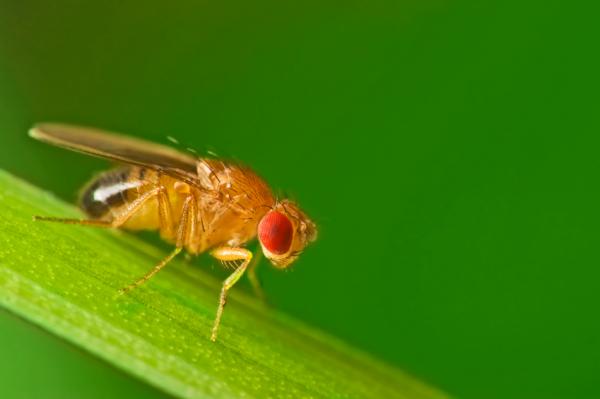
Gender & Courtship Affect Gene Expression in Fruit Flies 1/13/2011
Biologists at Texas A&M assert that genetics may play a more influential role in courtship behaviors than previously believed.
Studying male fruit flies, Dr. Ginger E. Carney compared gene expression profiles in males that courted females, males that interacted with other males, and males that lived alone.
Researchers identified a common set of genes that responded to either sex. But other genes were only affected by being with a member of a particular sex. Dr. Carney also studied mutant flies, bred without these socially responsive genes, confirming that they were critical for social interactions.
Carney predicts that researchers are on the verge of understanding genes and neural signaling pathways that influence reproductive and other behavioral interactions. via Science Daily
